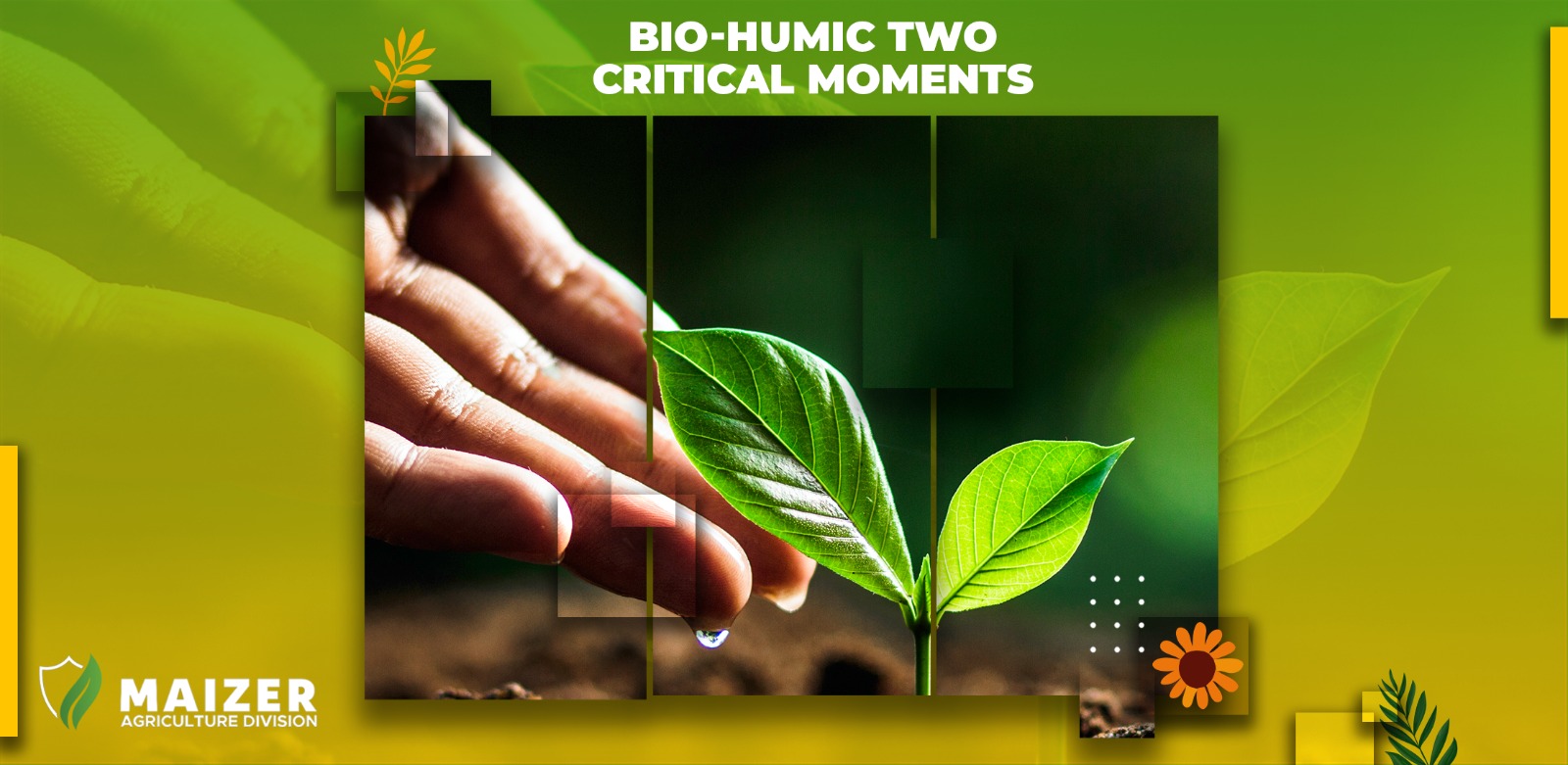Bio-humic Two Critical Moments

Abstract
Managing plant-parasitic nematodes is most reliable when you combine timely intervention with sustained recovery support. Bio-humic (BIO HUMIZER) is designed for that layered approach: humic & fulvic acids enhance nutrient use and root architecture; plant-extracted biomolecules (including organosulfur compounds) exert nematicidal/nematostatic and feeding-deterrent effects; and a high Total Organic Carbon (TOC ~25% w/w) energizes a beneficial soil microbiome that naturally suppresses nematodes. Its organic N (0.5% w/w) supports steady growth, while K₂O (2.0% w/w) strengthens cell walls and defense enzymes, helping plants tolerate and outgrow feeding injury.
Introduction
Nematode pressure is rarely solved by a single input. Fields that consistently minimize damage do two things well:
1. Build a suppressive soil before nematodes and roots meet.
2. Support root recovery after first symptoms, planting stress, or a chemical nematicide course.
Below are the two critical moments to apply Bio-humic (BIO HUMIZER) to capture both advantages.
At a Glance

• 1st Moment — Build the Base: Pre-plant / pre-transplant soil conditioning
• 2nd Moment — Lock in Recovery: Early establishment & post-stress (or post-nematicide) support
• Real-World Use Scenarios
• Bottom-Line Mechanisms & Benefits
• Your Practical Checklist
• Key Points
1st Moment — Build a Suppressive Soil Before Planting
Why this moment matters
The best time to tilt the rhizosphere in your favor is before roots are exposed. BIO HUMIZER’s carbon-rich and biologically active chemistry helps create a soil where nematodes are less competitive and roots establish faster.
How Bio-humic (BIO HUMIZER) helps
- Protein synthesis and enzyme formation
- Cell division and expansion
- Photosynthetic efficiency
- Overall plant vigor and green coloration
Phosphorus (P) – 12% (as P₂O₅)
Phosphorus is essential for energy transfer and structural development:
- Humic & fulvic acids chelate Fe, Zn, Mn and other micronutrients, boosting uptake and vigor so plants can
better tolerate punctures and feeding sites. They also stimulate root initiation and elongation, producing a
larger root network to offset feeding losses. - High TOC (~25% w/w) feeds beneficial microbes; conditions favor nematode-trapping fungi and predatory
nematodes—hallmarks of a biologically suppressive soil - Energy storage and transfer (ATP/ADP)
- Plant-extracted biomolecules (incl. organosulfur compounds) provide nematicidal/nematostatic action and
feeding deterrence, reducing colonization pressure on new roots.
Putting it into practice
- Incorporate or fertigate during final bed prep or pre-plant irrigation to enrich the near-root zone with organic
carbon and humic substances. - Prioritize high-risk blocks (sandy soils, nematode history, short rotations)
- Pair with sanitation, resistant varieties, and crop residues that support microbes; Bio-humic amplifies rather
than replaces these practices.
What success looks like
- Cleaner seedlings and transplants with more branching roots
- Faster early mineral nutrition (from chelation effects).
- Fewer galls or lesions on first root inspections.
2nd Moment — Lock in Root Recovery During Early Establishment & After Stress:
Even with a strong start, early wounds and post-nematicide gaps can let populations rebound. This is the second
window where BIO HUMIZER shines.
How Bio-humic (BIO HUMIZER) helps:
- K₂O (2.0% w/w) supports cell-wall fortification, osmotic regulation, and activation of defense enzymes—
resulting in tougher root tissues and more phenolic synthesis that deters penetration and feeding. - Organic N (0.5% w/w) provides slow-release nutrition for steady shoot and root growth, helping plants
Page 2
outgrow feeding damage and maintain canopy development - Humic/fulvic acids + high TOC continue to energize microbial antagonists, while biomolecules maintain
nematode inhibition during recovery.
Putting it into practice:
- Apply via transplant drench, in-furrow, or drip at the 2–6-leaf stage (or equivalent vegetative stage) and
after any chemical nematicide to help rebuild a protective microbiome and repair roots. - Re-check roots 10–14 days later; repeat only if pressure and damage indicators remain high.
- Keep plants well-fed but balanced—avoid salt spikes that disrupt microbial recovery.
Real-World Use Scenarios (Illustrative)

• High-value vegetables after fumigation: After initial suppression by a fumigant, a Bio-humic recovery pass re-establishes microbial life and supports root regrowth, limiting mid-season rebound.
• Sandy soils in short rotations: Pre-plant conditioning + early-stage drip application strengthen roots and boost antagonistic microbes, stabilizing yield where nematodes typically surge.
• Perennial replant blocks: Bio-humic assists re-rooting and defense enzyme activity during establishment, complementing other cultural controls.

Bottom-Line Mechanisms & Benefits (What you can reasonably expect)
- Chelation & vigor: Better micronutrient delivery → more resilient, fast-growing roots.
- Root system expansion: Humic/fulvic-driven root initiation & elongation offset feeding loss
- Microbial suppression of pests: High TOC fosters nematode-trapping fungi and predators → more suppressive soil.
- Direct nematode pressure reduction: Organosulfur & organic acids provide nematicidal/nematostatic effects and feeding deterrence.
- Structural defense: K₂O strengthens cell walls and defense enzymes; phenolic synthesis further deters
penetration. - Steady recovery growth: Organic N keeps growth moving without soft, surgey tissue that invites feeding.
Timing & Method:
- Before planting / at bed prep: Incorporate or fertigate Bio-humic to prime the rhizosphere.
- At transplant / early vegetative stage: Drench or drip to seal early wounds and lock in recovery
- After chemical nematicide (if used): Re-inoculate the zone with organic carbon & humic substances to help
rebuild microbial balance.
Field Monitoring
- Root checks: Gall severity, lesion counts, and new white root tips
- Plant status: Canopy vigor, leaf color, and uniformity (nutrient chelation benefits)
- Soil biology: Residue breakdown and soil tilth—indicators that TOC-driven biology is active
Compatibility & Stewardship
- Integrate with rotation, resistant varieties, sanitation, and irrigation management.
- Mixing: Follow label guidance; jar-test when combining with salts or extreme-pH inputs.
- Target high-risk zones first (light, low-OM soils; known hot spots).
Key Points
- Moment 1: Pre-plant — Use Bio-humic to build suppressive soils and kick-start robust roots.
- Moment 2: Early establishment — Use Bio-humic to fortify tissues, sustain recovery, and stabilize the
rhizosphere. - BIO HUMIZER’s humic/fulvic acids, plant-extracted biomolecules, high TOC, organic N, and K₂O
provide complementary mechanisms that reduce nematode impact and improve plant resilience.


